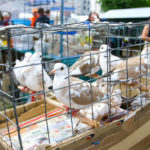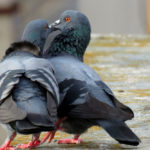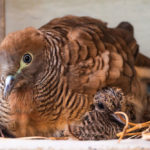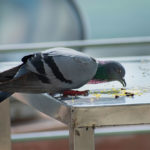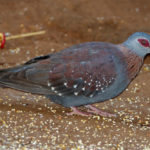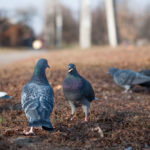Pigeons are seen in many regions of the world. If you have been outside today or looked out of your window, chances are, you have seen a pigeon.
However, not all pigeons are the same. There are actually over 300 species of wild pigeons and doves in the world. And, amazingly, the now extinct Dodo was regarded as a pigeon.
Pigeons are pretty adaptable. This is why we see them living in all countries and continents. Just like humans, pigeons have happily made all corners of the world their home.
While pigeons roam urban and rural environments, the species we commonly see in our cities is the Columbia Livia or the Rock pigeon.
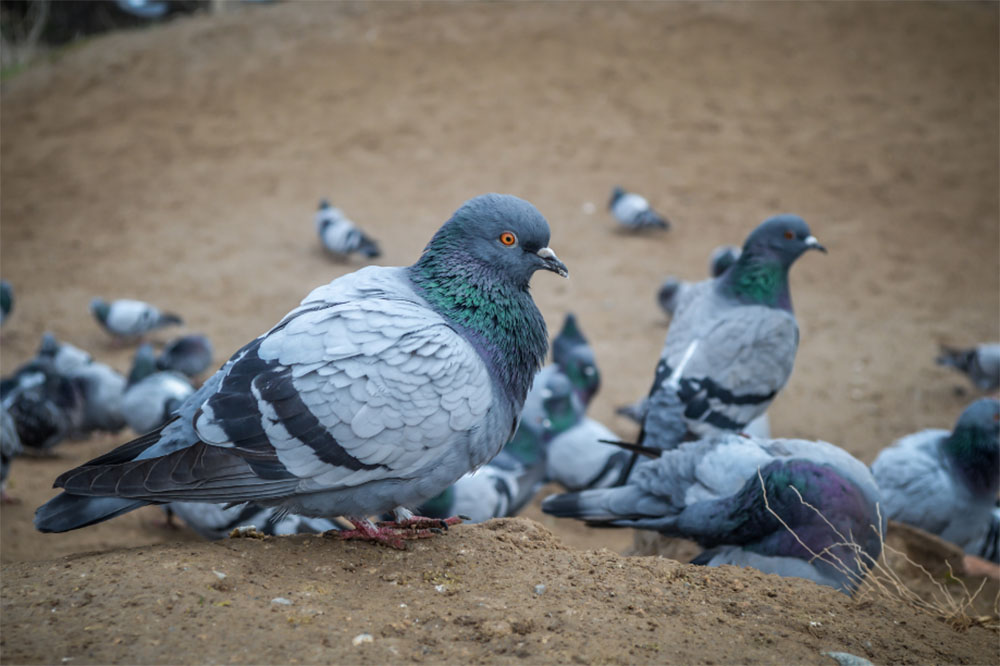
Over thousands of years, humans have inbred Rock pigeons leading to the 300 or so domestic pigeons we see today.
And, although pigeons are sometimes seen as pests in many areas, throughout the centuries, they have been regarded as magical birds.
This is why they have become such popular pets for so many. They are known to be loyal, friendly, and resilient creatures that can even be relied upon to carry important messages.
This led to the introduction of carrier pigeons who delivered letters and notes before telephones were widely used.
With such a rich history behind them, let’s find out more about pigeons. Read as to discover some fascinating facts about the different kinds of pigeons that live alongside us every day.
Domestic Pigeons
Many breeds of pigeons are domesticated. These are for a variety of reasons from sports use, for hobbies, and even for food.
Unlike wild pigeons, these domesticated kinds can not fend for themselves when released into the wild.
Here are common types of domesticated pigeons:
Racing And Homing Pigeons
These are highly popular pigeons for domestication. While they can come in a range of colors, most homing pigeons are blue or white, like wild pigeons.
As the name suggests, these pigeons are commonly raced against each other. They are also popular as wedding “doves” or simply as pets.
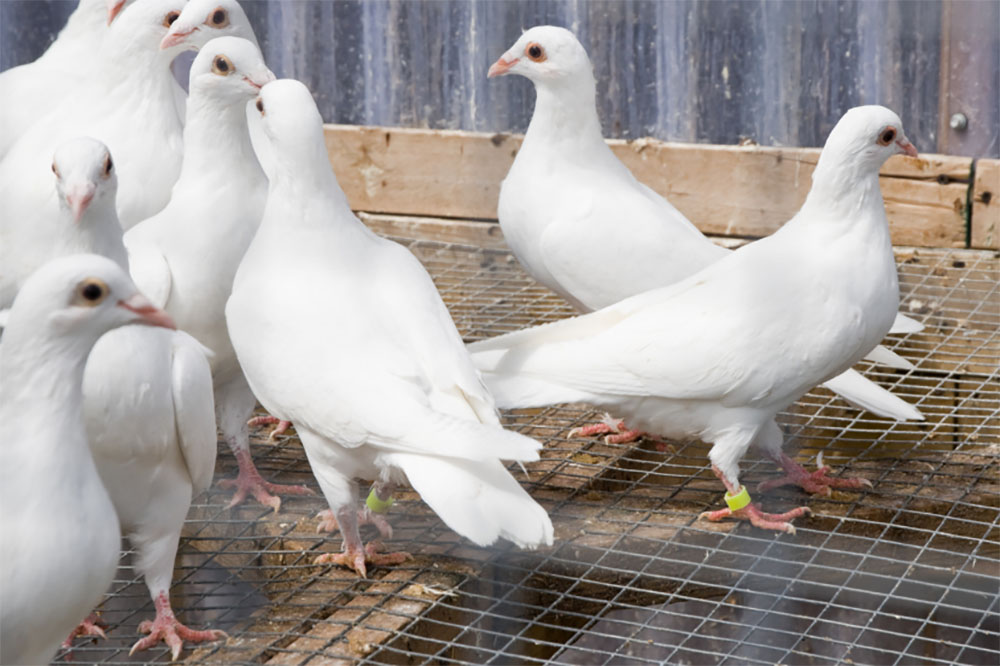
Homing pigeons are fast animals thanks to their muscular and strong build. Due to exceptional homing instincts, these pigeons are also trained to return to their owners/lofts after an event or race.
Bands are often attached to racing and homing pigeons in case they get lost or injured. Therefore, their information can be traced back to the original owner.
King Pigeons
Unlike racing and homing pigeons, King pigeons are not aptly named. These birds are bred for food, otherwise known as squab.
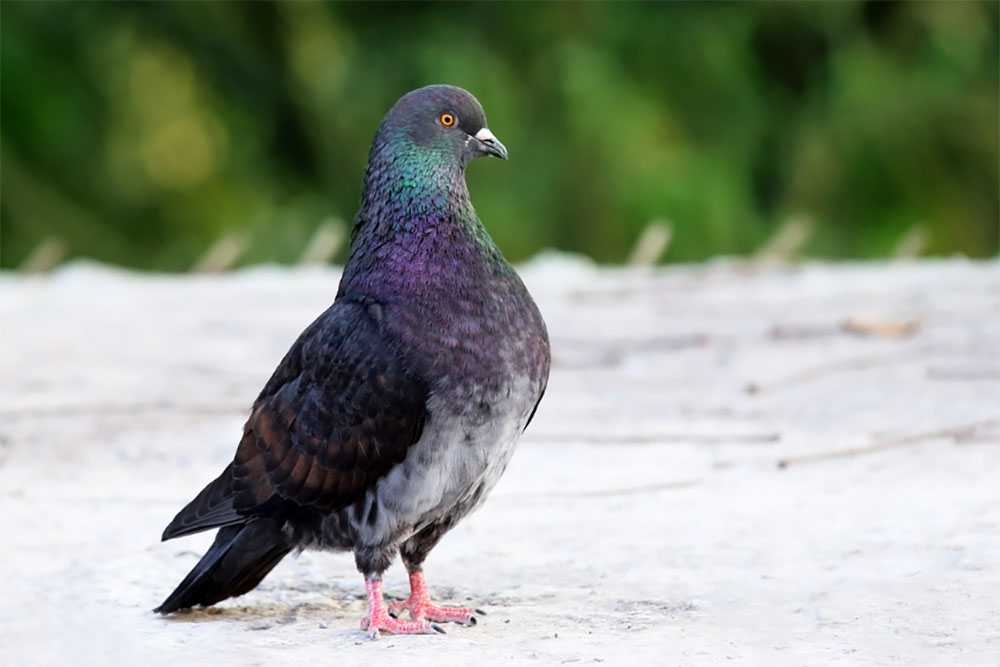
Compared to homing and feral pigeons, the King kind is larger and has a pink beak with pure white feathers.
King pigeons do not cope so well if they are released into the wild as they do not possess sufficient survival or flight skills.
Nevertheless, they are great pets and, over time, can become accustomed to humans.
Fancy Pigeons
With such a fancy name, these pigeons are kept by pigeon fanciers and hobbyists. Some owners show off their pigeons in competitions as people do with their dogs. Meanwhile, others just keep fancy pigeons as pets.
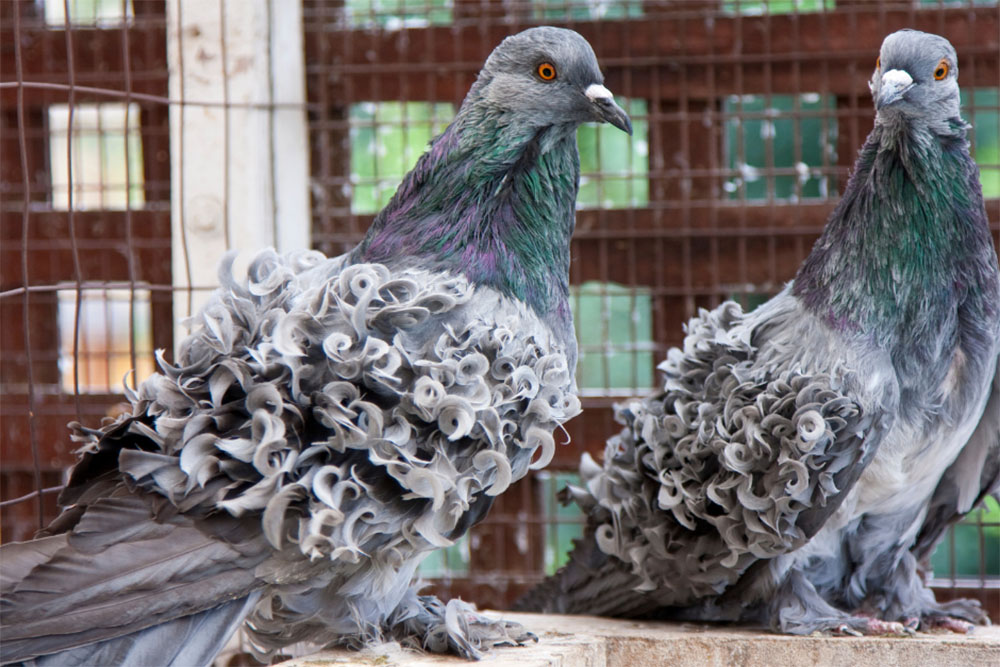
There is not just one breed of fancy pigeon. There are many including Tumblers, Pouters, and Owls.
Other Types Of Domestic Pigeons
There are many other types of domestic pigeons such as:
- Fantail pigeon
- Old German Owl pigeon
- French Mondain
- Carneau
- Tippler
- Dragoon pigeon
- Helmet pigeon
- English Pouter
- Chinese Owl pigeon
- Turbit
The list goes on and on.
Feral Pigeons
When you see a pigeon in urban or suburban settings, they are usually feral Rock pigeons.
These are a common type of pigeon with blue feathers. They tend to roost on buildings and forage for leftover food in public places.
If you witness a feral pigeon in the countryside, they will typically roost in barns, around natural cliffs, or under bridges.
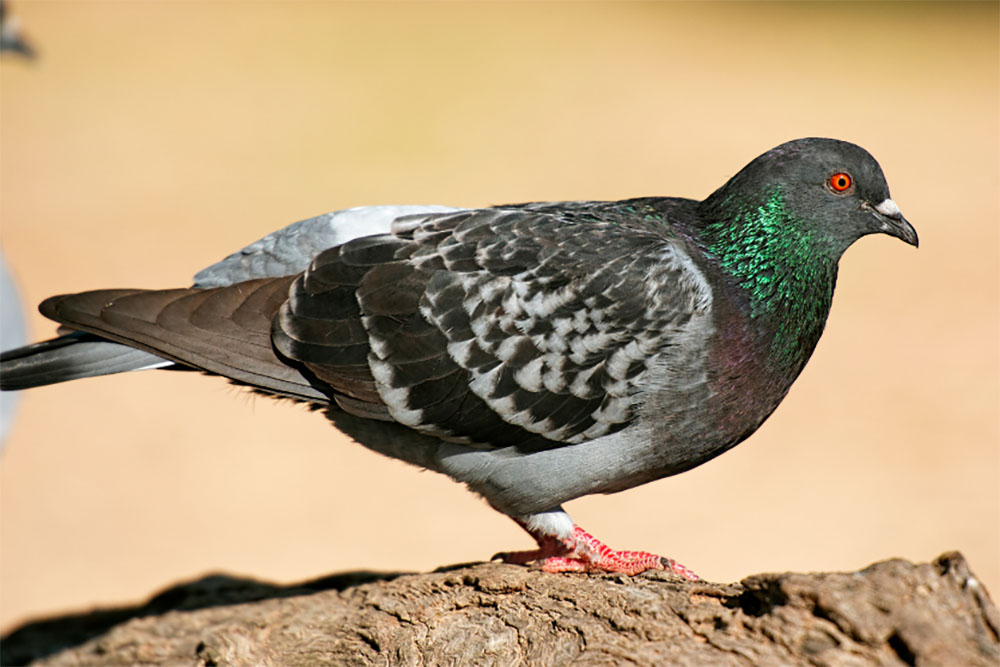
There are more variations of feral pigeons today due to crossbreeding with domestic types. This means some feral pigeons sport similar colorings and plumage to domestic pigeons.
Unlike domestic pigeons, the feral kind adapts very well to living in the wild, especially in cities, suburbs, and rural areas.
Feral pigeons are best left alone as they do best when they live in the wild. Therefore, they are not suitable as pets.
Band-Tailed Pigeons
Here we have pigeons that are native to the Pacific Coast and North America.
Band-tailed pigeons have long, grey-banded tails as well as a white band at the nape of their neck. This accompanies a multi-colored patch.
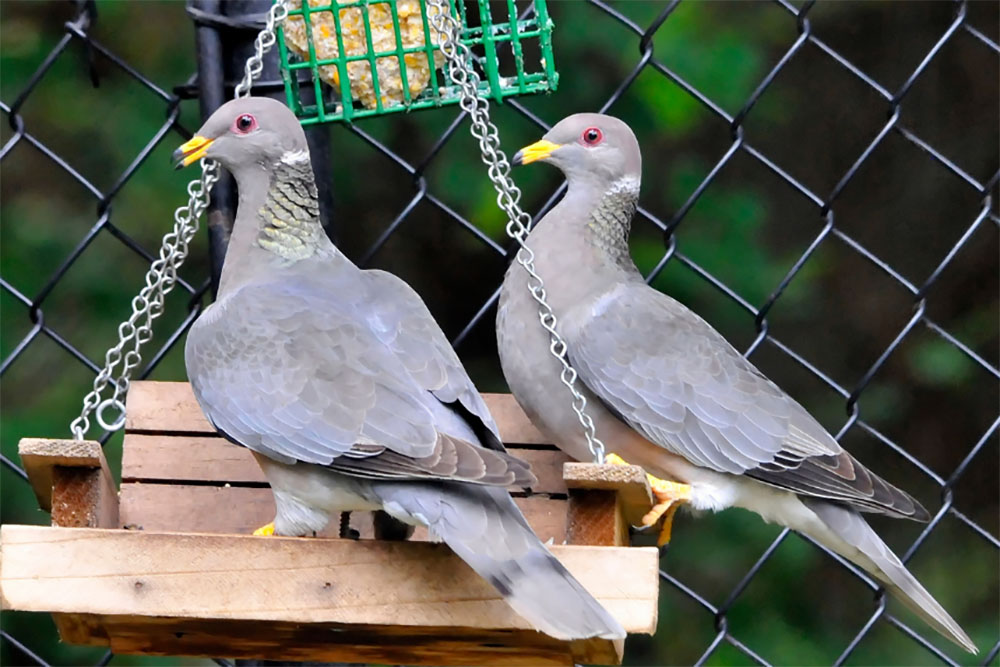
You will find these pigeons in forests of the Southwest and Pacific Coast and, even if you don’t see them, you can recognize the pigeon from its mellow coo from the treetops.
Band-tailed pigeons tend to feed solely on seeds and fruits and are usually made up of large flocks. Acorns make up a significant chunk of their diets as well as berries and grains.
As they fly overhead, you can easily mistake them for their Rock pigeon cousins. But, you can distinguish these pigeons from their long tails and wide, pale bands across their tips.
Measuring approximately 14 to 18 inches in length, Band-tailed pigeons sport a vivid yellow beak to match their bright yellow feet.
Although they can be mistaken for Rock pigeons up above, their color variations are quite different.
Roosting in woodlands and forest edges, Band-tailed pigeons spend the majority of their lives in trees.
Interestingly, Band-tailed pigeons are known to travel quite far for food. Some studies have found that they fly an average of 3 miles between their nesting and feeding sites.
The oldest on record was 18 years and 6 months old. This is over 12 years longer than the average lifespan of a wild, feral pigeon.
In Summary
These are just the main types of pigeons with over 300 domestic species currently in the world.
Given that most of us see pigeons every day, we do not possess as much knowledge about these fantastic creatures as we probably should.
Here are some fun facts to finish with:
- Pigeons are herbivores with diets consisting mainly of plants, seeds, and fruits
- They can recognize familiar faced people and can even recognize themselves in mirrors
- Pigeons can detect when storms, earthquakes, or volcanoes before they occur
- Some breeds of pigeons can live for 30 years or so
- Pigeons are responsible for saving over one thousand human lives during wartime thanks to messages and updates being carried for various missions

